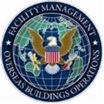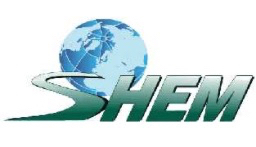Title Page
-
Audit Title
-
Site
-
Prepared by
-
Conducted on
-
Location
Fuel Burning Appliances and Equipment
-
Instructions
-------------------
1. Answer "Yes", "No", "N/A" for the questions below.
2. Add any photos and notes by clicking on the paperclip icon.
3. To create a corrective action click on "Add Action", provide a description, assign to a member, set priority and due date.
4. Complete audit by providing a digital signature.
Venting of Exhaust Gases
-
Outdoors away from intakes and windows
-
Chimney and flue constructed and installed properly (per manufacturer)
-
Chimney and flue inspected annually and cleaned
Combustion Air
-
Adequate combustion air ducted to unit or
-
Anobstructed area large enough to provide adequate combustion air
-
Small mechanical areas have sufficient combustion air and ventilation openings
-
No hazardous or flammable vapor sources near combustion equipment
Operation and Maintenance
-
Instructions available for proper operation and maintenance
-
Equipment operated and maintained as intended within design limits
-
Warning labels (English and local language) present on combustion appliances
-
Add signature
Clearance to Combustibles
-
Adequate clearance from exhaust flue to combustible materials
-
Adequate clearance from equipment to combustible materials
-
Boiler and furnace rooms not used for storage areas
Fuel Type and Storage
-
Fuel used is appropriate for appliance(s)
-
Proper type and location of fuel storage container (including tanks)
-
Protect fuel storage containers from damage and secure them for protection against weapons of opportunity
Carbon Monoxide Alarms
-
Carbon monoxide alarm installed, at about eye level, outside of sleeping areas (including household staff) in residences with any combustion appliance (other than cooking oven/stove) or an attached garage
Generators
-
Adequate space and, if leased, landlord agrees to the generator
-
Placed outdoors as far away as practical and a minimum of 1.5 meters (5 feet) from any building
-
Exhaust outlets >= 3 feet from exterior walls and roofs, 10 feet from operable openings into buildings, and 10 feet above adjoining grade
-
If the distance and direction of the exhaust is not feasible, then extend 3 ft. above the building. (See 'Venting of Exhaust Gases' section)
Portable Kerosene Heaters
-
Single family home use only
-
Correct grade of clear kerosene (K-1) fuel stored outside in safety cans
-
Refuel outdoors away from sources of ignition, and after the heater has cooled completely
-
Set the wick height to the manufacturer's recommended level
-
Chimney is seated properly
-
Window opened slightly (e.g., 25mm/1 inch) in the room with the heater
-
Do not leave the heater unattended and turn off before going to bed
-
Keep the heater at least 1 m (3 ft.) from combustibles unit is operated and maintained according to the manufacturer's instruction and residents are informed of the instructions
-
Carbon monoxide alarms must be placed in dwelling
Liquefied Petroleum (Propane)Gases (LPG)
-
Cylinders during use:
-
Must be located on the exterior of the building
-
Equipped with a pressure regulator having a pressure relief valve
-
Upright and securely anchored or chained in place
-
At least 7.6 m (25 ft.) from sources of ignition and 1.5 m (5 ft.) from building openings
-
Cylinder storage:
-
Outside within a fenced enclosure
-
Outlet valves closed with cap or cover
-
Steel posts or barriers if vehicle damage is possible
-
"No Smoking" signs clearly displayed around the storage enclosure with universal symbols or local language and English
-
Secure tanks to ensure they cannot be used as weapons of opportunity
-
Trained employees for LPG installation and cylinder replacement
-
Refilled tanks or bottles delivered, no recharging or filling of tanks or bottles at the site
Completion
-
Signature:













